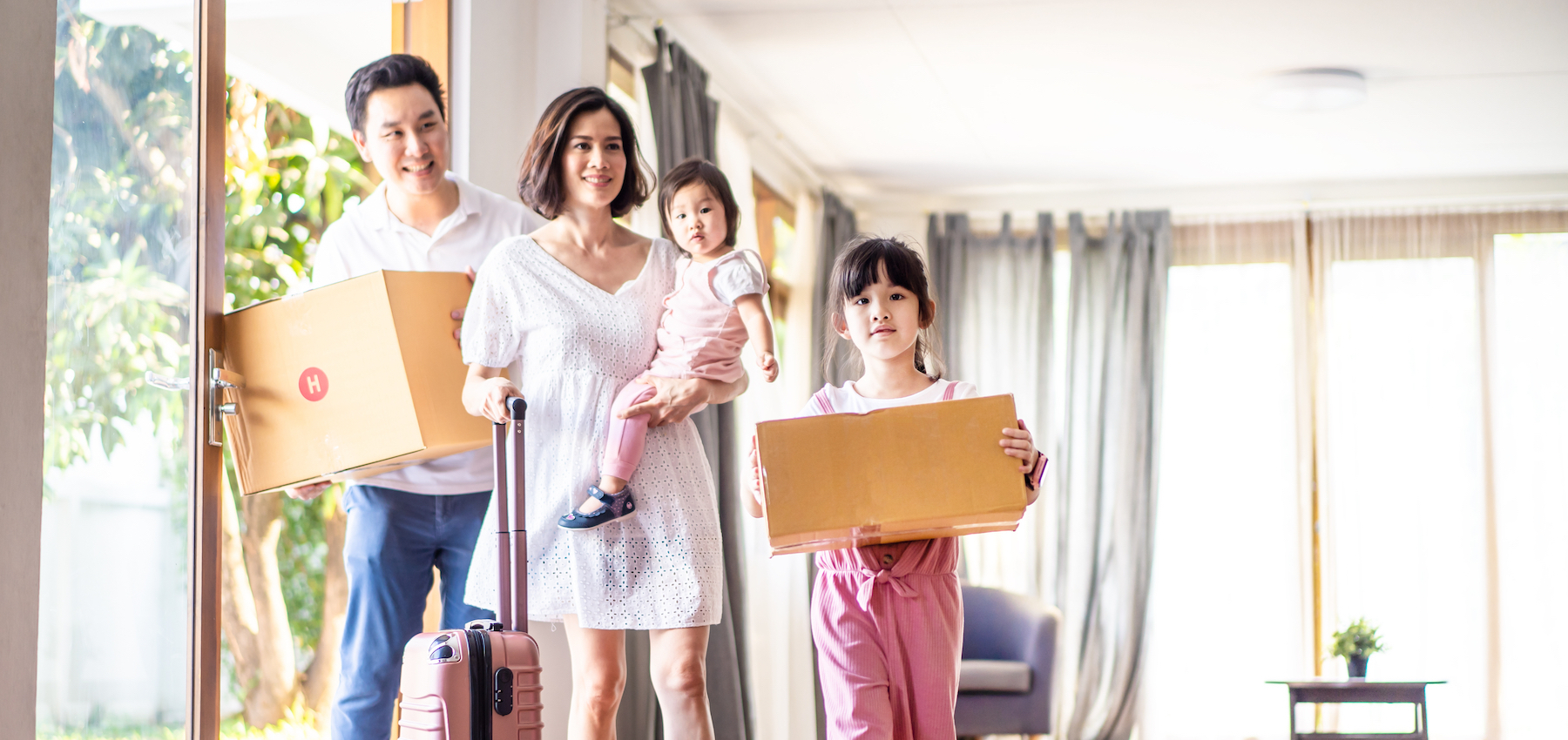You may have plans to buy your own home in Canada after initially renting accommodation for a few years. Although homeownership is the ultimate goal for many newcomers, the ever-increasing cost of purchasing property in Canada has made many of the country’s newer residents defer their dream of buying a home.
To make it easier for residents of Canada to purchase or build their first home, the government launched the First Home Savings Account (FHSA) in 2023. This article covers everything newcomers should know about the FHSA, including how the First Home Savings Account works, the eligibility requirements to open an FHSA, contribution limits, tax benefits, the conditions for withdrawing FHSA funds, and more.
In this article:
- What is the First Home Savings Account (FHSA)?
- How does the First Home Savings Account work?
- Who is considered a first-time home buyer for an FHSA?
- Who is eligible to open an FHSA?
- What are the contribution limits for FHSA?
- How to open a First Home Savings Account
- Withdrawing funds from a First Home Savings Account
- What happens to funds in the FHSA if you don’t buy a home?
- How is FHSA different from the Home Buyers’ Plan?
- Should newcomers open an FHSA?
What is the First Home Savings Account (FHSA)?
The First Home Savings Account (FHSA) is a new registered savings plan announced by the federal government of Canada in the 2022 budget. Starting April 1, 2023, prospective first-time home buyers in Canada, including new permanent residents, can open FHSA accounts to save money for their first home purchase.
Like with other registered plans, the First Home Savings Account offers tax incentives on your contributions as well as the returns you earn on savings held in this account. However, there are limits on how much money you can put into your FHSA each year and cumulatively.
How does the First Home Savings Account work?
An FHSA allows prospective first-time home buyers to save money and grow their savings, tax-free, expressly for their first home purchase in Canada. You can use funds from your FHSA to make a down payment on your first home in Canada, cover construction or renovation costs on your new first home, or make installment payments for a pre-construction residential property.
Once you open a First Home Savings Account, you can make tax-deductible contributions up to a maximum annual (and lifetime) limit. Tax-deductible means that, like with a Registered Retirement Savings Plan (RRSP), any contributions you make to your FHSA in a given year can be deducted from your taxable income.
Moreover, when you’re ready to purchase your first home in Canada, withdrawals that you make from your FHSA will also be tax-free (unless you withdraw funds for a different purpose). This means that neither your initial investment nor the earnings on your money (including interest, capital gains, dividends, etc.) will be taxed if you use these funds to buy a qualifying home.
Similar to an RRSP or Tax-Free Savings Account (TFSA), you can hold funds in your FHSA in the form of cash, Guaranteed Investment Certificates (GICs), stocks, options, bonds, Exchange-Traded Funds (ETFs) or mutual funds. However, this may vary depending on your issuer.
Who is considered a first-time home buyer for an FHSA?
To be eligible to open a First Home Savings Account, you (and your spouse or common-law partner) must qualify as a first-time home buyer. You’ll be considered a first-time home buyer if you (or your spouse or partner) did not live in a qualifying home as your principal residence at any time in the calendar year in which you open an FHSA or in the four calendar years preceding it.
A qualifying home is defined as an existing or under-construction housing unit in Canada that you can purchase, including single-family homes, semi-detached houses, townhouses, condominium units (or condos), apartment units, or mobile homes. A rented unit is not considered a qualifying home.
To be eligible for the FHSA’s tax incentives, you must continue to meet the definition of a first-time home buyer until the time you withdraw funds from your account. However, you can take up residence in your new home up to 30 days before withdrawing funds from your FHSA (for instance, if you intend to use the funds for further construction, renovation, etc.).
Who is eligible to open an FHSA?
You can only open a First Home Savings Account if you meet all of the following conditions:
-
- You are a Canadian resident: This includes citizens, permanent residents, and certain temporary residents who meet the residency requirements for income tax purposes. Typically, temporary residents, including work permit holders and international students, must reside in Canada for at least 183 days in a tax year to qualify as Canadian residents.
- You are 18 years of age or older: In some provinces and territories where the age of majority is 19, you must be at least 19 years old to open an FHSA account.
- You are a first-time home buyer in Canada: You, your spouse or your partner have not individually or jointly owned your principal residence in the last four to five years.
What are the contribution limits for FHSA?
Once you’ve decided to save towards your goal of purchasing a home in Canada, you can make contributions of up to $8,000 per calendar year. The lifetime maximum contribution for the First Home Savings Account is $40,000. You can have multiple FHSA accounts, but the annual and lifetime limits apply to you as an individual and are the total combined contribution limits for all your FHSA accounts.
Unlike with the Registered Retirement Savings Plan (RRSP), you don’t need to file an income tax return before opening and contributing to an FHSA. So, as a newcomer, you can open an FHSA and begin making small contributions (there is no minimum annual contribution) soon after you arrive, even before you find a job in Canada. Any unused contribution room will carry over to the next year, up to a maximum of $8,000.
As an example, if you open an FHSA account in 2023, you can contribute a maximum of $8,000 this year. If you only contribute $2,000 in 2023, the unused contribution room of $6,000 will carry over to 2024 (bringing the total contribution room for 2024 to $8,000 + $6,000 = $14,000). However, if you only contribute another $2,000 in 2024, only $8,000 of the unused contribution room will carry over to 2025. (You will lose $4,000 of lifetime contribution room).
Be careful not to exceed your annual contribution limit for FHSA as an overcontribution penalty of 1 per cent per month applies to any amounts deposited over and above the permitted limit.
Can I open a joint FHSA with my spouse or partner?
You cannot open a joint First Home Savings Account with your spouse or common-law partner. However, both you and your spouse/partner can open individual FHSA accounts and contribute up to the annual maximum of $8,000 each. This will enable you to collectively save up to $16,000 per year towards a down payment on your future home.
However, unlike with an RRSP, you cannot contribute to your spouse or partner’s FHSA.
How to open a First Home Savings Account
You can open a First Home Savings Account with an FHSA issuer, such as banks like Royal Bank of Canada (RBC), credit unions, trusts, or insurance companies.
Once you’ve determined that you meet the qualifying criteria to open an FHSA, you can contact your financial institution to learn about the types of FHSAs they offer and the investments you can hold within an FHSA.
To open an FHSA, you’ll need to provide your bank or financial institution with the following documents:
- Your Social Insurance Number (SIN)
- Date of birth proof
- Any other supporting documents to show that you’re a qualifying individual, such as your (and your spouse/partner’s) PR card or another residence permit, address proof and lease documents.
Speak to an RBC Newcomer Advisor for more information on opening a First Home Savings Account and guidance on saving towards your goal of homeownership.
Withdrawing funds from a First Home Savings Account
Withdrawals made from your FHSA are not taxable if you use these funds to buy your first home. However, you may be required to pay tax if you withdraw money from your FHSA account for other purposes.
Qualifying withdrawals (that is, withdrawals that qualify as tax-free) must meet all of the following conditions:
- You (and your spouse or common-law partner) are a first-time home buyer.
- You have a signed contract or agreement to purchase or complete construction of a qualifying home before October 1 of the year following the withdrawal date.
- You haven’t acquired the home more than 30 days before the date of withdrawal.
- You’ve provided your FHSA issuer with a filled-out Form RC725 Request to make a Qualifying Withdrawal from your FHSA.
- You are a resident of Canada at the time of the first qualifying withdrawal and when you purchase or build the home.
- The home must serve as your principal residence within one year of purchase or construction completion.
You must close all your First Home Savings Accounts by the end of the year following your first qualifying withdrawal. For instance, if you make your first withdrawal from FHSA on 2 May 2023, you’ll have to close all your FHSAs by 31 December 2024. You are not eligible to open another First Home Savings Account after making a qualifying withdrawal.
The money within your FHSA is not locked in and you can withdraw it at any time. However, non-qualifying withdrawals are taxable and must be included in your income for tax purposes. A withholding tax will be applied to non-qualifying withdrawals. There are two exceptions to this:
- If you’ve over-contributed to your FHSA, you can make a designated withdrawal of the excess amount. In this case, you don’t need to report the designated amount as income. (Only the first $8,000 you contribute to your FHSA each year is tax-deductible, so any excess contributions are already tax-paid.)
- If you’ve already included the amount you’re withdrawing from your FHSA account in your income, you don’t need to pay extra tax on it.
What happens if you become a non-resident of Canada before withdrawing funds from your FHSA?
If you become a non-resident of Canada after opening your First Home Savings Account, you can continue making contributions to your account as normal.
However, as a non-resident, you’ll not be eligible to make qualifying withdrawals from your FHSA to purchase a home. Any withdrawals you make from your FHSA as a non-resident will be taxable and subject to a withholding tax of 25 per cent unless your country of residence has a tax treaty with Canada that qualifies you for a lower tax rate or tax exemption.
You may become a non-resident for tax purposes under certain conditions, such as:
- If your work permit or study permit expires and you don’t extend it or become a permanent resident of Canada during that time
- If you don’t meet the physical residency requirement to maintain your permanent residence in Canada
- If you stay in Canada for less than 183 days in a given tax year and don’t have significant residential ties with the country
- If you relinquish your PR status or Canadian citizenship.
What happens to funds in the FHSA if you don’t buy a home?
You must use the funds in your First Home Savings Account to purchase a qualifying first home within 15 years of opening the account or before the end of the year in which you turn 71, whichever is earlier.
However, plans change, and there’s always a possibility that you’ll decide not to buy a home in Canada. In such a situation, the money in your FHSA account is not lost. You have the following options to transfer or use funds from your FHSA:
- You can transfer your FHSA funds to your Registered Retirement Savings Plan (RRSP) account without affecting your RRSP contribution room (or to a Registered Retirement Income Fund account if you’ve converted your RRSP to an RRIF). Transfers to your RRSP or RRIF are not taxable.
- You can also withdraw funds from your FHSA for a different purpose. However, when you do so, the entire amount, including your contributions and returns earned, will be taxable. Your FHSA issuer is responsible for withholding tax from non-qualifying withdrawals and you must report these amounts in your income. If the tax withheld is more than the tax you’re required to pay, you’ll be eligible for a tax refund or credit.
How is FHSA different from the Home Buyers’ Plan?
Although both the First Home Savings Account and the Home Buyers’ Plan (HBP) serve the same purpose of helping Canadian residents purchase their first home, the two differ in several ways. Let’s look at some of the differences:
| First Home Savings Account (FHSA) | Home Buyers’ Plan (HBP) | |
| What is it? | A dedicated registered account that allows you to save money tax-free for your first home purchase in Canada. | A plan that allows you to withdraw funds tax-free from your RRSP to buy your first home. |
| How much can you withdraw? | No upper limit. However, you can contribute a lifetime maximum of $40,000 to your FHSA. Any returns you earn on your savings or investments can also be withdrawn tax-free. | You can withdraw up to $35,000 from your RRSP under the Home Buyers’ Plan. |
| Fund repayment | You don’t need to repay the funds you withdraw from your FHSA. | You must pay back the funds you withdraw from your RRSP under the HBP within 15 years (or pay tax on the withdrawn amount). |
Contributing to an FHSA does not negatively impact your eligibility for the Home Buyers’ Plan. This means that once you’re ready to buy your first home in Canada, you can use both the Home Buyers’ Plan and funds from your First Home Savings Account.
Should newcomers open an FHSA?
As a newcomer, buying your first home in Canada is a huge milestone. However, with housing costs on the rise, saving for a down payment can take time. The FHSA is an excellent way to set aside and grow your savings for a home purchase in Canada.
If you’re working towards a mid- to long-term goal of owning a home in Canada, you can open a First Home Savings Account and start contributing to it soon after moving to Canada. However, bear in mind that you must intend to buy a qualifying home within 15 years of opening your first FHSA account to avail the tax benefits of this account. We recommend that you speak with an RBC Newcomer Financial Advisor to get advice on opening and contributing to an FHSA and setting financial goals in Canada.







